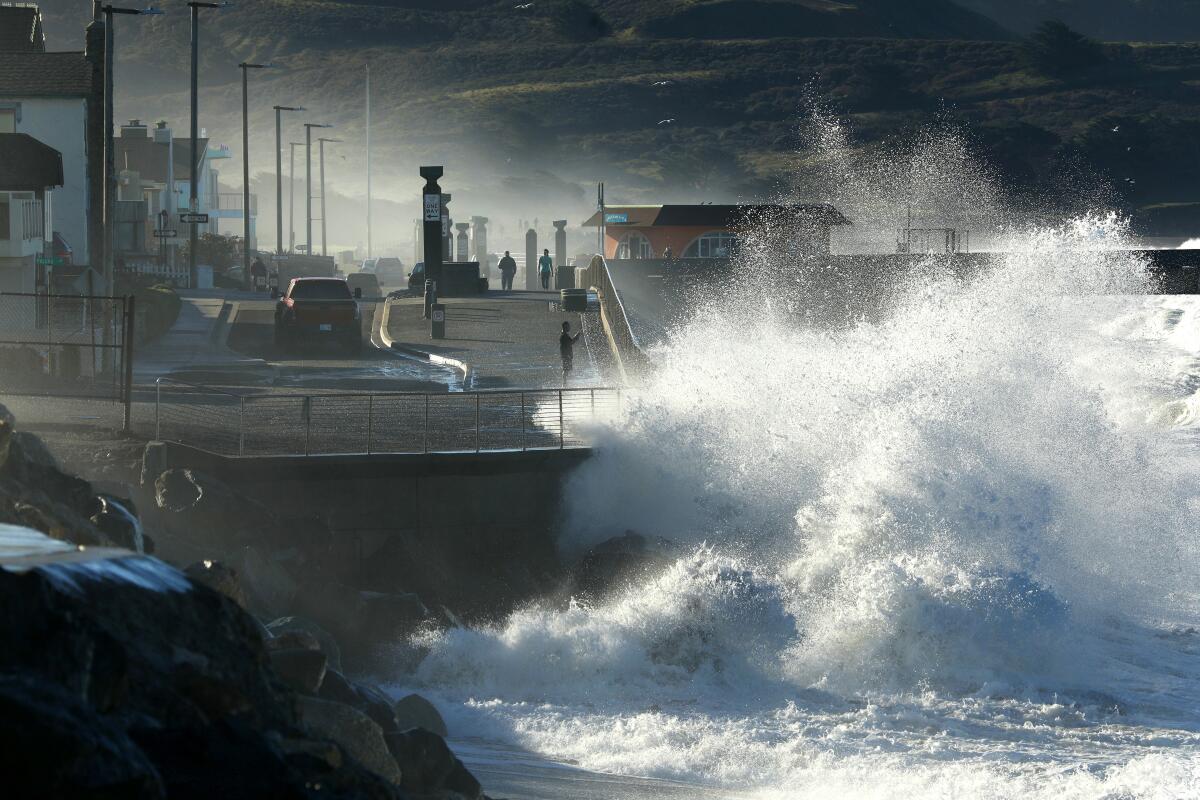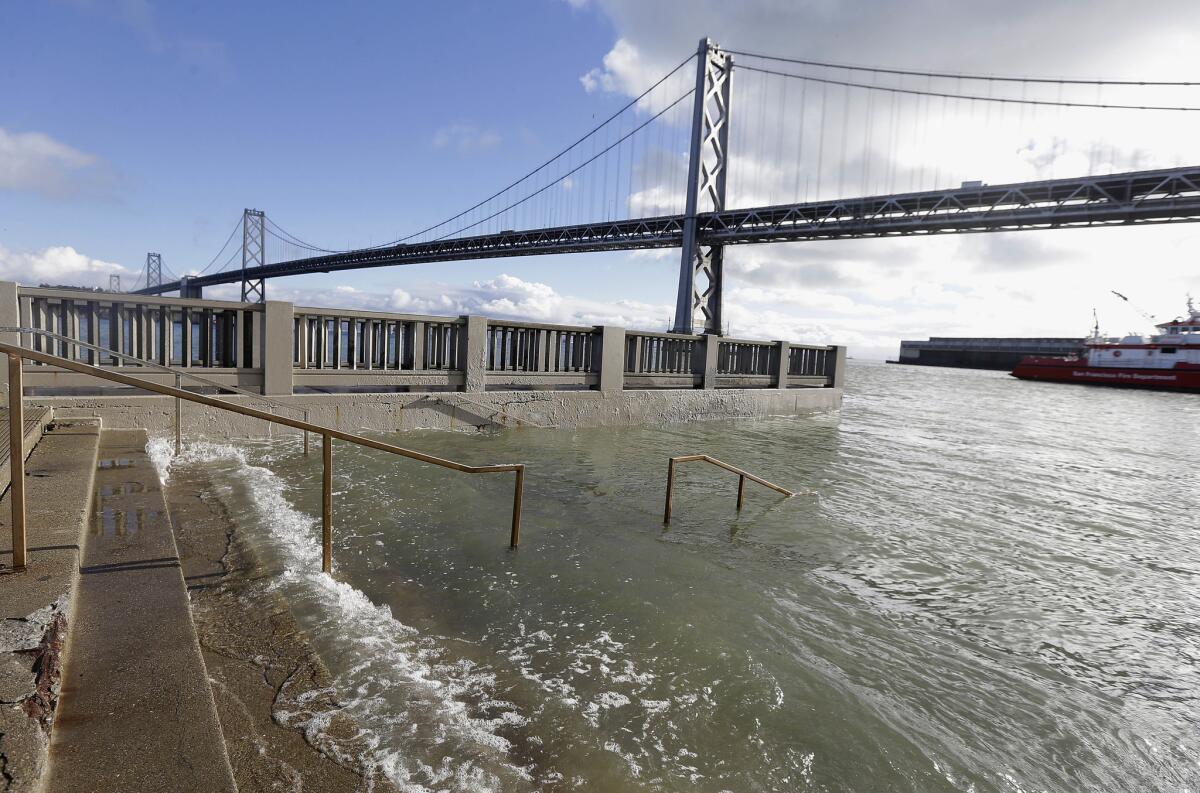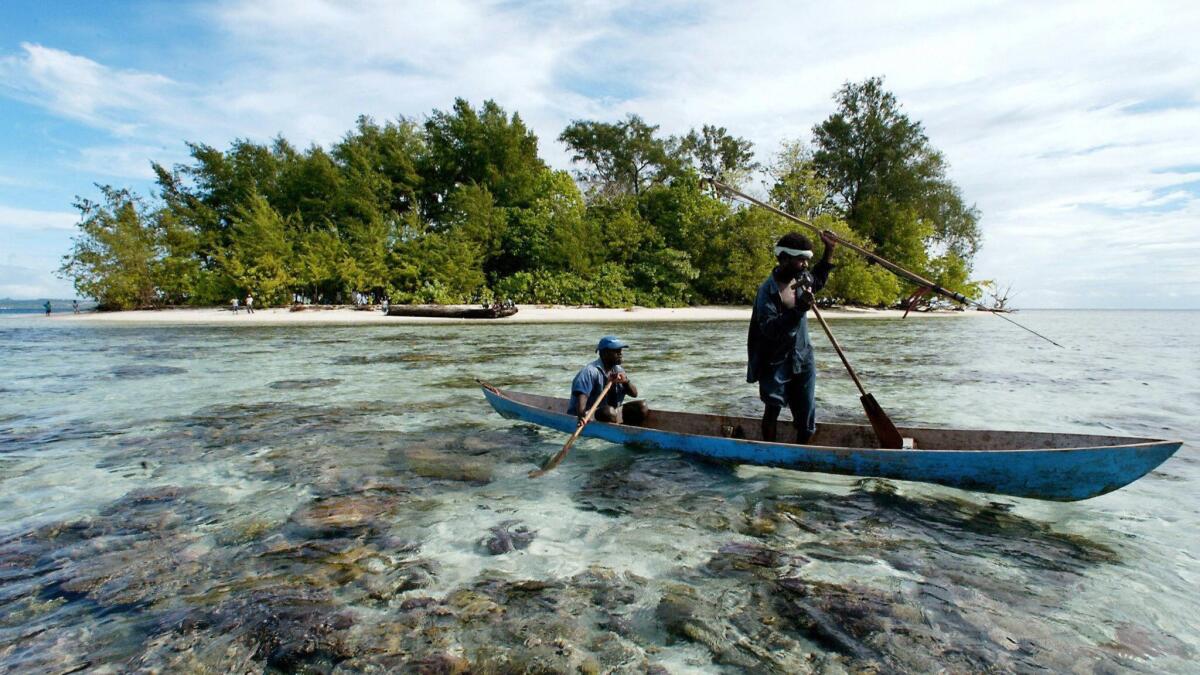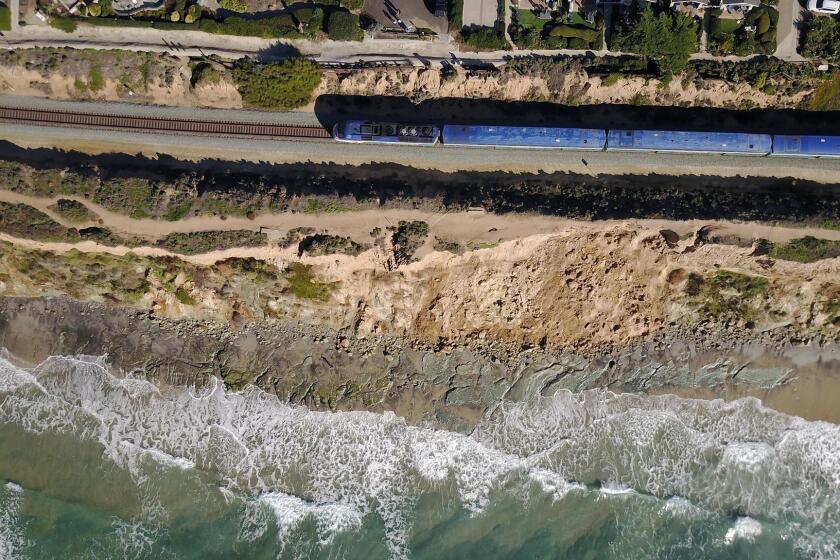The oceans are taking a beating under climate change, U.N. report warns

- Share via
The planet is in hot water — literally — and that will have dire consequences for humanity, warns a new United Nations report on the state of the world’s oceans and ice.
Over the next century, climate change will make the oceans warmer and more acidic. Melting ice sheets will drive up sea levels at an accelerating pace. Marine heat waves will become 20 to 50 times more frequent, harming sensitive ecosystems. And the total biomass of animals in the sea could drop by as much as 15%, according to the sobering assessment by the U.N. Intergovernmental Panel on Climate Change.
“The oceans and ice are in trouble, so we’re all in trouble,” said Michael Oppenheimer, a climate scientist at Princeton and a lead author of the report.
But while some damage is inevitable at this point, the report makes clear that society’s efforts to reduce greenhouse gas emissions in the coming decades will determine how bad things ultimately get.
It’s “the difference between an unmanageable problem and one that humans can deal with,” Oppenheimer said.
The analysis, released Wednesday at a meeting of scientists and policymakers in Monaco, follows close on the heels of the U.N. Climate Action Summit in New York, which failed to elicit ambitious commitments from the world’s biggest polluters. Yet the report underscores just how costly delaying action will be.
Thus far, the world’s oceans have been the quiet hero of our warming world. They have absorbed about a quarter of the carbon dioxide humans have pumped into the atmosphere since the dawn of the industrial revolution, and 90% of the resulting heat.
“But it can’t keep up,” said Ko Barrett, the deputy administrator for research at the National Oceanic and Atmospheric Administration and a vice chair of the Intergovernmental Panel on Climate Change, or IPCC.
The report illustrates how climate change has already started to alter the chemistry and circulation of the oceans, and how that exacts a heavy toll on marine ecosystems. Coastal communities, which will be home to a billion people by 2050, are also feeling the impacts, starting with rising seas.
Over the last century, sea level rise was primarily driven by runoff from melting mountain glaciers in places like Alaska and the Andes, as well as by the expansion of seawater as it warmed. Now, however, the massive ice sheets in Greenland and Antarctica have taken over as the largest contributors, and they are increasing sea levels faster than ever.
Since 2006, sea levels have risen at a rate of 0.14 of an inch per year — more than double the rate over the previous century.
The big question is what will happen next.
Based on new research since the last IPCC assessment came out in 2014, the authors increased their estimates of projected future sea levels.
Compared with the turn of the 21st century, sea levels will increase about 1.5 feet by 2100 and will rise a total of 3 feet by the year 2300 — if society rapidly reduces greenhouse gases.
That will present plenty of challenges, “but things will evolve slowly, giving humans plenty of time to plan,” Oppenheimer said.
On the other hand, if countries fail to curb emissions in the next few decades, the world will see about 3 feet of sea level rise by the end of the century — and much more after that.
In the worst-case scenario, in which parts of the Antarctic ice sheet start to collapse, we could be in for as much as 17 feet of sea level rise by 2300. That would probably outpace society’s ability to adapt, Oppenheimer said.
No one knows exactly where the tipping point lies, but scientists have already seen troubling signs of rapid ice loss in places like Antarctica’s Thwaites Glacier, which alone contains enough water to raise sea levels by 2 feet.
“That is very worrying,” said Regine Hock, a glaciologist at the University of Alaska Fairbanks and an author of the report. “The indications are there that instability might be on its way.” (Hock also coordinated a chapter on high-mountain areas, which looked at the impacts of shrinking glaciers and snowpacks on ecosystems and communities.)
Regardless of how much sea levels rise over the long term, they will cause problems for coastal communities in the short term because of increasingly devastating storm surges and high tides.
By 2050, flood events that used to occur only once a century will happen at least once every year in many places in the world, even under a best-case scenario, according to the report. In fact, one study found that so-called 100-year floods will occur in Los Angeles about five times per year by mid-century.

On top of that, hurricanes will intensify, and extreme El Niño and La Niña events — which have profound impacts on California’s weather — are forecast to happen twice as often by the end of the century. That’s true no matter how quickly countries reduce greenhouse gas emissions.
Many of these episodes will be unlike anything in living memory, and will require communities to plan for unprecedented impacts. “If we do business as usual, we won’t be prepared for them,” said So-Min Cheong, a human geographer at the University of Kansas and an author of the report.
The assessment also looked at how climate change is affecting fish populations and the communities that depend on them.
Warming waters have put many marine animals on the move, and range shifts are expected to become more pronounced in the future. One analysis found that some fish species along the West Coast could migrate as much as 600 miles north under a high-emissions scenario. (Creatures that can’t relocate, like corals, could simply be eradicated.)
Some animals will thrive in their new homes and others will hit dead ends, forcing fishing industries to adapt. But on the whole, unmitigated climate change will decrease the potential catch of global fisheries by 20%, the report concluded.
Tropical countries will be hit the hardest, in part because many communities depend heavily on the ocean for their livelihood, said Katie Matthews, chief scientist at the nonprofit organization Oceana, who was not involved in the report. As with sea level rise, however, the extent of the damage depends on how quickly society acts to reduce emissions, she said.
A recent study found that meeting the goals of the Paris climate accord — which are to limit global warming to less than 2 degrees Celsius — would protect 3 million tons of the most lucrative fish catches. These gains would benefit developing countries the most.
The report authors called on governments to protect ecosystems and people from these impacts. It emphasized the need to slash greenhouse gas emissions, and to reduce other stresses on marine animals to give them breathing room to adapt to climate change.
There is no one-size-fits-all approach to making coastal communities more resilient, Cheong said, but governments could help by improving early warning systems for disasters, encouraging residents to plan for climate change when they rebuild, or, in some cases, consider retreating altogether. The report highlighted the need to start adapting now for an uncertain future.
“We owe it to our children and future generations to plan for resilient communities while we can,” said Jack Ainsworth, executive director of the California Coastal Commission. “History will judge us harshly if we do nothing or take halfhearted steps.”
In Oppenheimer’s view, the U.S. is particularly far behind. The National Flood Insurance Program gives people an incentive to remain where they will be vulnerable to future storms, and the government’s reactive approach means that there is often no money for adaptation until after a disaster has struck.
“These communities along the coast are basically sitting ducks,” he said.

But there are also reasons to be hopeful. The ocean holds the potential to accomplish roughly a quarter of the greenhouse gas reductions needed to meet the Paris climate targets, according to a report released Monday by the High Level Panel for a Sustainable Ocean Economy, a group of scientists and world leaders convened by the World Resources Institute.
For instance, seagrass meadows, salt marshes and mangrove habitats can sequester huge amounts of what scientists call “blue carbon.” Preserving and restoring them yields other benefits too, like buffering coastlines from storms and serving as nurseries for economically important fish.
Oceans can also help by providing climate-friendly foods. As the IPCC’s last major report on land use pointed out, eating beef and other land-based meats is a significant driver of climate change. But fish is a green alternative.
Many fisheries are already overexploited. But researchers say that smart management could boost yields and be sustainable.
“You can get more out of the ocean if you just pay attention and manage it properly,” Matthews said.
Even so, there’s no escaping the grim picture painted by the IPCC report. If climate change continues unabated, “the consequences for humanity are sweeping and severe,” Barrett said.
“What’s at stake is the health of ecosystems, wildlife and — importantly — the world we leave our children.”








